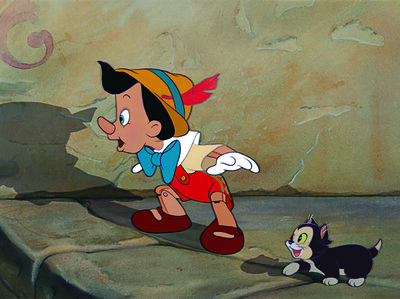«The human being deceives, but doesn’t give signals like Pinocchio» Mark Frank, a psychosociologist and director of the Communication Science Center at the University of Buffalo in New York, an internationally renowned expert in behavioral sciences and a member of the FBI’s behavioral unit, makes it clear that while in the fairy tale the character’s “nose” grows longer and the deception becomes evident, in reality, by interpreting body language, «we cannot distinguish truth from lies with one hundred percent accuracy».

Joe Navarro, a world expert in body language, nonverbal communication, former FBI agent, and supervisor, also confirms this. «Detecting a lie is not simple because human beings are good at lying. One of the most interesting stories involves Roderick James Ramsay, a spy convicted in 1992 for being involved in a spy ring that sold secrets about European defenses. It was one of the largest espionage investigations in FBI history. We didn’t know he was a spy, but when I went to talk to him – Navarro specifies – every time I mentioned a man who was arrested in Germany, the cigarette trembled in his hands, and there was no reason for him to be nervous. The repetition of this tremor every time I talked about that person led me to think that there was a connection between them, and this prompted me to investigate».
When a person speaks to us, we listen to their words and seek confirmation in their face, gaze, or gestures, which can communicate «signs of distress, anxiety, nervousness, and concern, but not deceit», because «there is no certain way to recognize lies through nonverbal communication. It is the science that tells us that we are not very good at identifying deception. These are the studies of Paul Ekman». The expert refers to the American psychologist, a pioneer in recognizing emotions, who developed in 1978, together with Wallace V. Friesen, the FACS (Facial Action Coding System), a system for coding facial expressions that analyzes every micro-expression of the human face. It is the power to grasp emotions by capturing facial expressions. By examining the facial muscle movements, a person can explore the emotional state of the observer.
«A woman, during an interrogation, was very nervous and instead of calming down, she became more agitated, biting her lips, touching her neck, and rubbing her forehead. I told her, ‘You seem very nervous,’ and then I asked her, ‘Is there something bothering you?’ I thought she wanted to confess something, but she replied, ‘When I parked, the parking time was limited. The minutes are passing, and I don’t want to get a fine.’ We had read the right signals, but the cause was not that she was guilty, but simply because she didn’t want to be penalized for illegal parking».
When there is consistency between the words of the interlocutor and the signals their body sends, we can understand the other person. Frank continues by explaining that «some reading methods can identify deception with an estimation of eighty-five percent accuracy. Liars are less cooperative, tend to provide less relevant details about the crime, and behave inconsistently with their words. Con artists are the best at this because they provide an appearance, a kindness that makes people trust them. In our documentary ‘Inside the mind of a Con Artist,’ we found that if we didn’t know they were fraudsters, many of these individuals would have deceived us. In one case, a woman is interrogated by a police officer and claims to be stalked by someone who vandalized her house. Her behavior seemed honest, sincere, but she had severe and unusual reactions to skeptical questions, suggesting that she might have some dissociative disorder. It turned out she did».
Dissociation occurs when a person disconnects from their self, their personality, moves away from their identity, thoughts, emotions, and memories. For these reasons, «she had been under psychiatric care. So the woman was pretending to be stalked and had vandalized her own house».
Interpreting a gesture does not automatically become proof of guilt or innocence, as portrayed in the television series “Lie To Me”, where the protagonist, a psychologist and expert in nonverbal communication, always manages to tell when a person is lying. This is what emerges in Navarro’s concluding comment when he states that «it’s not like in the movies because we have to prove, whatever it is, whether it’s true or not. If someone tells us they were at the museum on Sunday, at the exhibition of Michelangelo’s David, we have to prove it, and we can’t do that by searching for deception».
Frank continues his analysis, highlighting a case that did not involve him directly but amazed him with its dynamics. It is the case of «Aldrich Ames who worked for the CIA» Ames, a former member of the intelligence agency, held roles in counterintelligence and analysis and was incriminated in 1994 for espionage in favor of the Soviet Union and Russia. «Ames passed the polygraph test, but other information suggested that something was wrong, even though the truth machine test appeared truthful». Deception, as philosophers also teach us, Frank concludes, «is anything that misleads us, whether deliberate or not, unlike lying, where the liar deliberately deceives without warning. A tiger that deceives its prey by blending with its environment did not choose its fur to deceive; evolution did. So it’s deception, but it’s not a conscious choice of the tiger. Even scientists studying animal behavior realize that they cannot definitively establish whether a baboon or a chimpanzee deliberately lies, but they can certainly deceive their peers».
In the case of animals, as well as humans, uncertainty can become certainty through investigation. «Because – as philosopher Pierre Abélard writes – through doubt, we are led to investigation, and through investigation, we arrive at the truth».
Read also: Se Pinocchio fosse reale verrebbe subito scoperto

